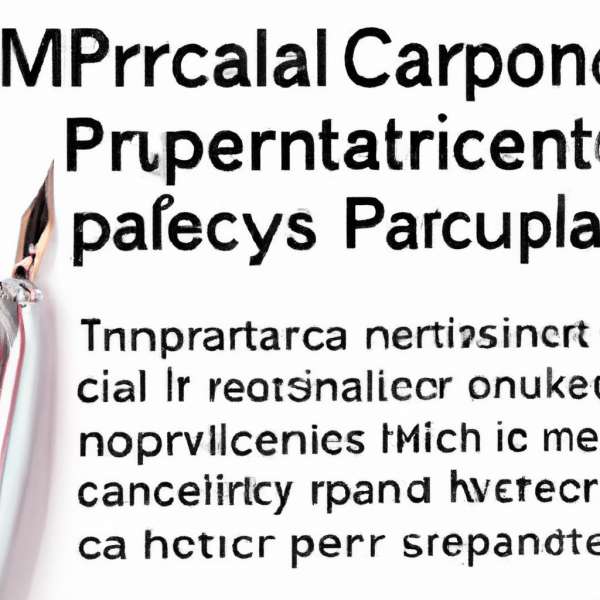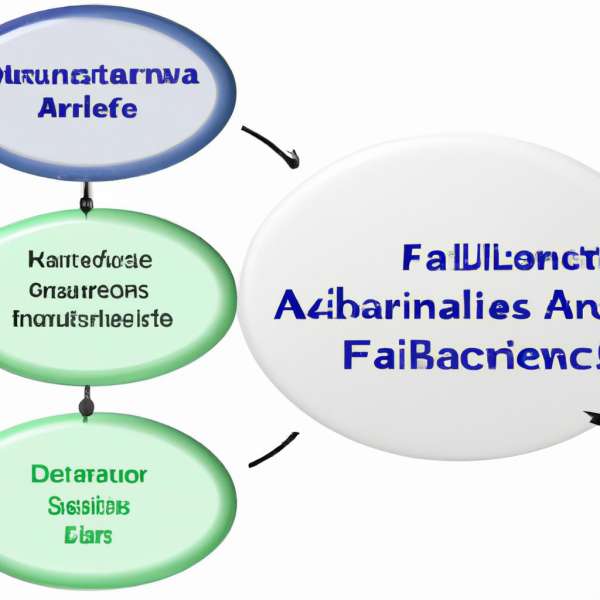The Impact of Medical Malpractice Caps on Claims: A Double-Edged Sword
In the intricate landscape of healthcare, where life and well-being hang in the balance, the legal framework surrounding medical malpractice plays a pivotal role in shaping the interactions between patients, medical professionals, and the justice system. Among the myriad of policies enacted to mitigate the effects of malpractice litigation, caps on damages have emerged as a particularly contentious topic. These financial limits, designed to curb excessive awards in malpractice cases, evoke a spectrum of opinions regarding their efficacy and fairness. As we delve into the complexities of medical malpractice caps, this article will explore their intended benefits, unintended consequences, and the nuanced ways in which they influence the claims process, striking at the heart of what it means to seek justice in the realm of medicine.

Understanding Medical Malpractice Caps and Their Rationale
Medical malpractice caps are limits imposed on the amount of damages that a plaintiff can receive in a malpractice lawsuit. These caps can vary significantly from one jurisdiction to another, and they often apply specifically to non-economic damages, such as pain and suffering, rather than economic damages like lost wages or medical expenses. The rationale behind implementing these caps is multi-faceted and often hotly debated.
Supporters of medical malpractice caps argue that they help to:
- Reduce Healthcare Costs: By capping potential payouts, healthcare providers may face lower malpractice insurance premiums, which can translate to lower costs for patients.
- Encourage Fairness: Caps aim to prevent exceedingly high awards that may not align with the actual harm suffered, ensuring that awards are proportional and just.
- Stabilize the Medical Field: Limiting the financial risks associated with treating patients may encourage more practitioners to enter higher-risk specialties where malpractice claims are more common.
Conversely, critics of these caps contend that they can:
- Undermine Justice: By limiting compensation, caps may fail to adequately reimburse victims for their losses, leaving them without sufficient resources for recovery.
- Prioritize Profit over Patients: These limits can be perceived as favoring the interests of insurance companies and healthcare providers at the expense of patient safety and recourse.
- Affect Quality of Care: If doctors know they will be shielded from large payouts, this could potentially lead to less vigilance in patient care, ultimately detracting from the quality of medical services provided.
Understanding both sides of the argument can be essential for navigating the complexities surrounding medical malpractice claims and their implications for individuals and the healthcare system alike.

Examining the Effects on Patient Compensation and Safety
Understanding the implications of medical malpractice caps goes beyond the financial aspects involved in claims; it touches on the very fabric of patient safety and the compensation they may receive following an incident of negligence. By instituting a cap on damages, states aim to control insurance costs and limit frivolous lawsuits. However, the reality of these caps often leads to an uneven landscape for patient advocacy.
When a patient suffers harm due to medical negligence, their path to justice and adequate compensation can be hindered by these legal limitations. Key effects of malpractice caps include:
- Reduced financial security: Patients may receive significantly lower settlements, which can impact their ability to cover ongoing medical care, rehabilitation, or other necessary expenses.
- Discouraged reporting: If potential payouts are minimal, patients might be less inclined to seek legal recourse, leading to underreporting of malpractice incidents.
- Potential decline in overall healthcare quality: Medical professionals may feel shielded from accountability due to caps, leading to complacency in practice and potentially impacting patient safety.
Consider the following table, which outlines differences in claim outcomes in states with malpractice caps versus those without:
| State Type | Average Claim Settlement | Reported Malpractice Incidents |
|---|---|---|
| With Caps | $250,000 | 1,200 |
| Without Caps | $1,000,000 | 1,800 |
This data reflects how the presence of caps not only limits compensation but may also correlate with lower reporting rates, raising questions about patient safety. Ultimately, while the intention of such caps is to maintain lower healthcare costs, their unintended consequences may burden patients seeking justice and compromise the standard of care provided by medical professionals.

Comparative Analysis of State Policies and Their Outcomes
The implementation of medical malpractice caps varies significantly across states, leading to a range of outcomes that invite scrutiny and debate. States that have adopted caps on noneconomic damages, which typically include compensation for pain and suffering, argue that these policies stabilize insurance premiums and reduce defensive medicine practices. However, the tangible effects of these caps on patient access to justice and the overall quality of care cannot be underestimated.
Several studies have indicated that states with rigorous caps often see a reduction in the number of malpractice claims filed. This decline can be attributed to the perception of reduced financial incentive for potential claimants. In contrast, states without such caps may experience a higher volume of claims, reflecting a more accessible legal environment for individuals seeking redress. A comparative analysis reveals the following outcomes:
- Claim Volume: States with caps often showcase lower claim incidence.
- Insurance Premiums: Many insurers report decreased rates following the introduction of limits.
- Patient Outcomes: The long-term effects on patient care remain a subject of ongoing research.
To further illustrate the differences in state policies, consider the table below, which highlights the outcomes in selected states:
| State | Malpractice Cap | Average Claim Amount | Yearly Claim Incidents |
|---|---|---|---|
| California | $250,000 | $750,000 | 1,500 |
| Texas | $250,000 | $500,000 | 2,000 |
| Florida | No cap | $1,200,000 | 3,500 |
| New York | No cap | $1,000,000 | 5,000 |
As seen in the data, caps on noneconomic damages seem to correlate with lower average claim amounts and fewer claims filed, but they do not paint the complete picture. The nuances of patient experiences, the ethical implications of limiting recovery for injury, and the potential deterrent effects on negligent practices merit careful consideration by policymakers aiming to strike a balance between protecting providers and ensuring patient rights.

Recommendations for Balancing Fairness and Accountability in Healthcare
In an environment where the healthcare system grapples with the implications of medical malpractice caps, it becomes crucial to explore avenues that promote fairness while fostering accountability among healthcare providers. One approach to achieving this equilibrium involves enhancing transparency in the medical malpractice process. **Open communication** between patients and healthcare providers can minimize misunderstandings and potential grievances. By encouraging a culture of honesty, healthcare systems can reduce the frequency and severity of claims, establishing a foundation built on trust.
Another recommendation is to implement continuing education and training programs focused on medical malpractice awareness for healthcare professionals. Regular training sessions on best practices for patient safety and risk management can empower providers to reduce incidents that may lead to malpractice claims. This proactive approach not only aids in minimizing claims but also enhances the quality of care delivered, preserving the integrity of the healthcare environment.
Additionally, **alternative dispute resolution** mechanisms should be explored as viable options to traditional litigation. Mechanisms such as mediation and arbitration offer a less adversarial avenue for addressing grievances that can lead to medical malpractice claims. These methods can foster an environment where both parties collaborate to reach a fair resolution, ultimately promoting accountability without imposing caps that may inadvertently compromise patient rights.
| Method | Benefits | Implementation Challenges |
|---|---|---|
| Transparency | Builds trust and reduces claims | Requires cultural shift |
| Education Programs | Improves patient safety | Time and resource constraints |
| Alternative Dispute Resolution | Fosters collaboration | Potential lack of understanding |
Future Outlook
the discussion surrounding medical malpractice caps is as complex as the healthcare system itself. While supporters argue that these limits can enhance access to affordable care and reduce frivolous lawsuits, critics highlight the potential consequences for patient rights and quality of care. As legal and healthcare landscapes continue to evolve, the repercussions of these caps will remain a topic of debate among policymakers, healthcare professionals, and patients alike. Ultimately, any resolution must strike a delicate balance between safeguarding physicians and ensuring justice for those harmed by medical negligence. As we move forward, informed dialogue will be essential to navigate the intricate interplay of law, ethics, and patient welfare, shaping a healthcare environment that prioritizes both accountability and compassion.


